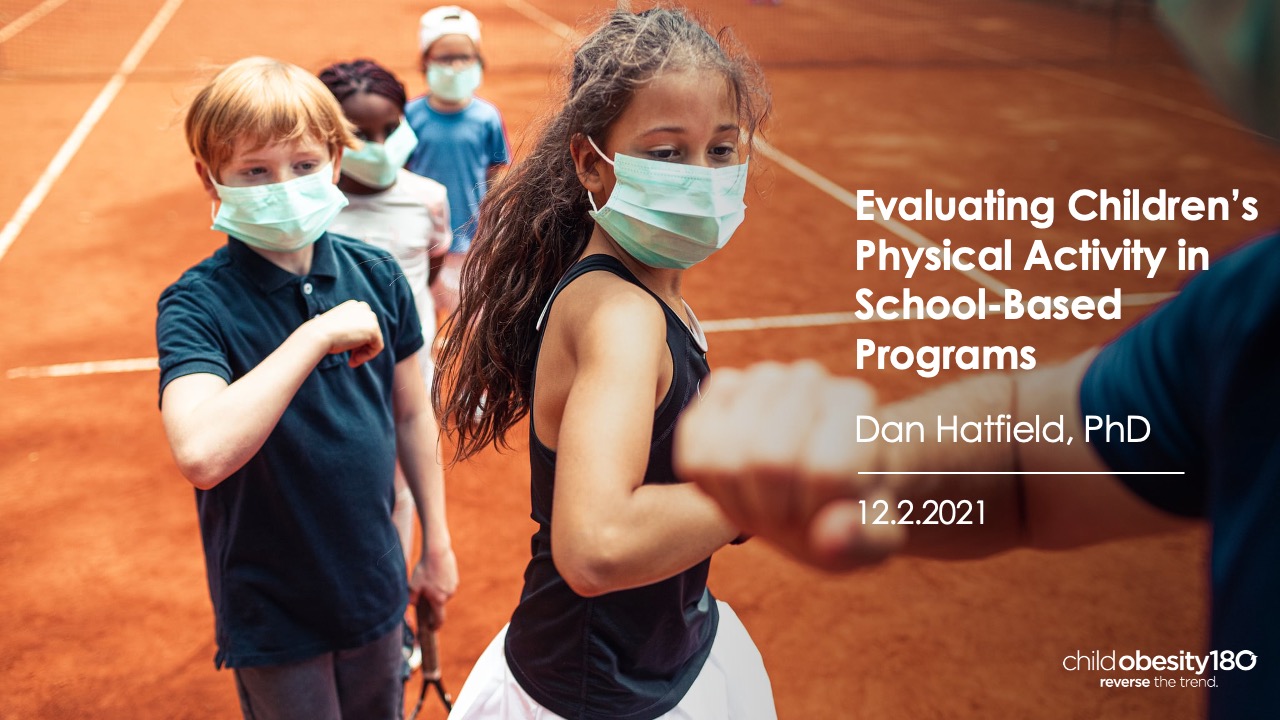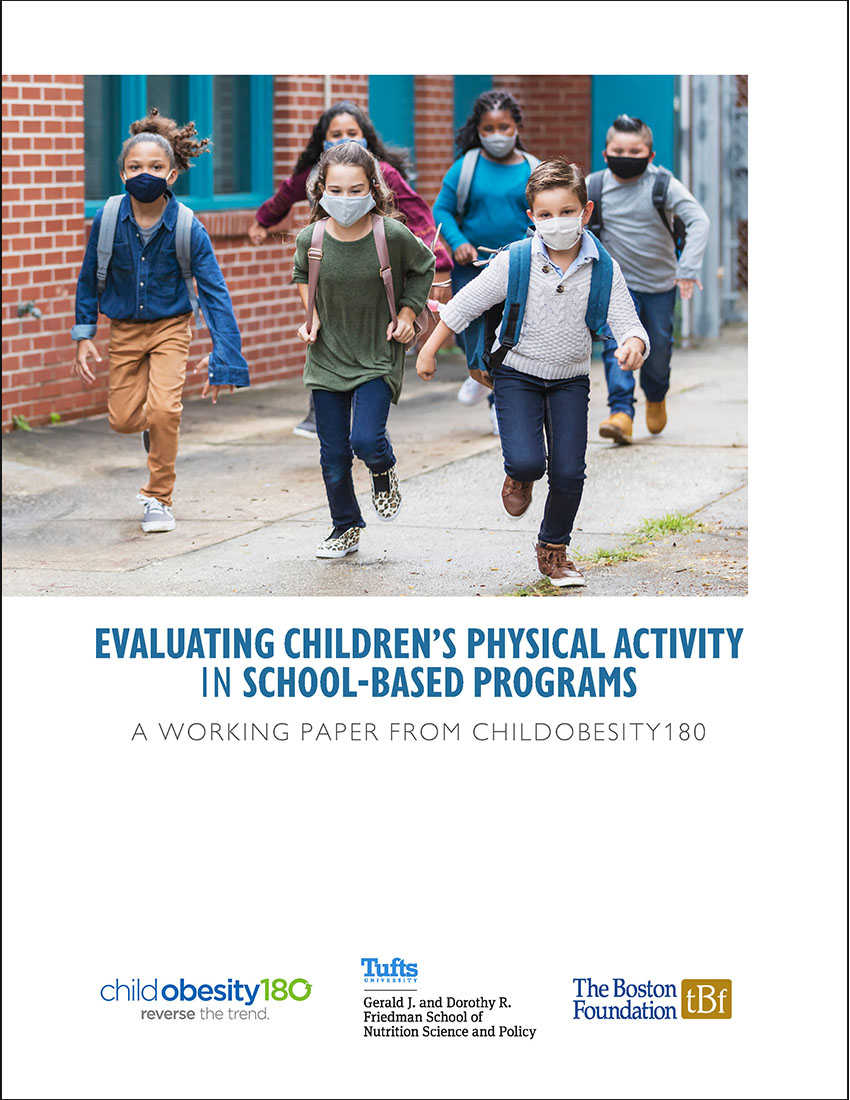On the Move:
A presentation and discussion of children's physical activity in school-based programs in Boston
December 2, 2021
As we look at the list of things lost in the pandemic, children’s access to physical activity and play should be high on the list, an area we need to monitor for long-term impact.
At a Boston Foundation forum on December 2, 2021, that exploration began as lead author Daniel Hatfield of ChildObesity180 shared preliminary results from Evaluating Children’s Physical Activity in School-Based Programs, a study of physical activity programs working with Boston schools before and during the pandemic. The research—planned before the COVID era as a multidimensional program impact assessment—looked specifically at four nonprofit organizations offering programs within public schools in Boston: BOKS, Community Rowing, Playworks, and Sportsmen’s Tennis & Enrichment Center, which all received funding from the Boston Foundation.
The pandemic changed more than just the research plan. Just as the researchers had to pivot away from in-person human studies with accelerometry and cardiovascular metrics of participants and move toward data gathering from a distance, the programs under study were doing similar pivoting. How has the pandemic impacted their work? Unsurprisingly, the top line impact was sobering. Hatfield and his colleagues found there were large decreases in “service capacity” (i.e., staff) and the number of students reached. Still, the four organizations, which pre-pandemic had delivered high amounts of service (measured in minutes of activity) with a broad reach across BPS schools, continued to serve thousands of kids remotely or with outdoor and distanced activities.
And as providers scrambled to adapt their offerings to public health restrictions, innovations emerged that are likely to remain in use. For instance, new equipment-free activities and take-home kits allow exercise to be done anywhere, and bringing activities home puts family members into the mix. Other report takeaways include confirmation that flexible funding was essential for activity providers’ adaptation and survival, and that the benefits of physical activity spill over into other areas of students’ lives, including attendance, enjoyment and feelings of belonging.
After the presentation, an energetic set of leaders talked about their on-the-ground experiences with issues highlighted in the report. Their passion and commitment inspire hope for Boston area kids’ healthy bounce-back from pandemic-driven isolation and even trauma.
When asked how she prioritizes physical activity for Rafael Hernandez K–8 School students among competing academic needs, Principal Carolina Brito reframed the question: “How do we engage the whole person—body, mind and soul—and respond effectively to kids’ needs during the pandemic?” Play and movement, she explained, lets kids be fully present, makes them part of a community, even helps them learn English. “’Physical education’ is not separate from education, an item to check off a list,” she said.
Playworks’ Dana Harris shared a key element of his program’s pre-pandemic success that remained powerful even when forced to be remote. “It starts with the coach,” he said. “Their demeanor and spirit, their energy and availability keep kids engaged.” Before the pandemic coaches organized recess activities to give students skills and choices about how to exercise those skills—always with modifications for different mobility levels. “When they play, they’re connected,” he said, affirming Brito’s take on the importance of physical activity in community-building. Even when remote, kids still connected through “open recess” with a coach online. Having consistent access to a dynamic and fun adult, who could mix talking about the day with exercise challenges or games, kept them present.
With schools back in person, coaches and guided physical activities may be more important than ever. Harris pointed out how relearning to deal with interactions outside the safety of your Zoom square can be tough on young people. When you can’t get on base in kickball and your peers can see your lack of success, for example, you may freak out. Harris said, “As coaches, we just (need to) be there. We hear them, talk them through it, and believe in them.” Brito finds that the trauma of the last 20 months “is manifesting each day in new challenges. We have to give students something to look forward to—beauty, joy, fun—and build community skills through that. Even where there is challenging or disruptive behavior and stressed kids, it is worth taking the risk to do joyful things.”
Toni Wiley shared similar adaptations and lessons learned at Sportsmen’s Tennis, and added a reminder: “Not all kids have had the same COVID experience. Just as better resourced schools could get up to speed with online learning faster than others, some kids have had more opportunities to stay engaged in skills,” whether they be in tennis or anything else. Access to a yard or park and adult supervision isn’t there for all. “Kids who have farther to bounce back may express more anger or frustration,” she observed.
Panelists
Ana Carolina Brito, Principal, Rafael Hernandez K–8 School
Dana Harris, Senior Program Manager, Playworks
Daniel Hatfield, PhD, Research Assistant Professor, ChildObesity180 at the Tufts University Friedman School of Nutrition Science & Policy
Elizabeth Pauley, Associate Vice President, Education to Career, The Boston Foundation (Moderator)
Bekah Salwasser, Executive Vice President of Social Impact, Boston Red Sox; Executive Director, Red Sox Foundation
Toni Wiley, Chief Executive Officer, Sportsmen's Tennis & Enrichment Center


